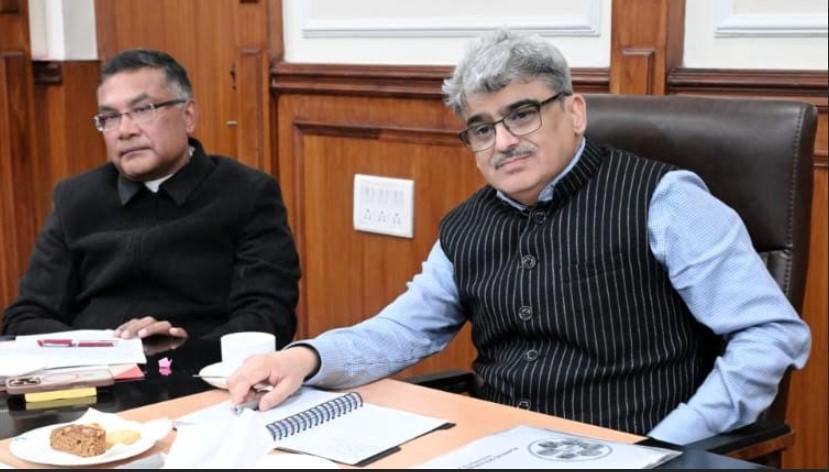The Reserve Bank of India (RBI) will transfer Rs 1.76 lakh crore to the government this fiscal, the central bank said after a board meeting.
The transfer includes Rs 1.23 lakh crore of surplus for FY19and Rs 52,637 crore of excess provisions identified as per the revised Economic Capital Framework (ECF) adopted at the meeting, RBI said in a statement on Monday. The higher surplus is due to the long-term forex swaps and the openmarket operations (OMO) conducted by the central bank over the last fiscal.Thesurplus transfer was finalised in line with the recommendations of the committee under former central bank governor Bimal Jalan. RBI’s central boardaccepted all the recommendations of the committee.
The additional amount of Rs 86,000 crore that the government will receive this year above its budgeted Rs 90,000 crore as transfers from RBIcould be either used to provide fiscal stimulus to a sagging economy, reduce off-balance sheet borrowings or meet the expected shortfall in revenue collections.
“It is a surprise to a certain extent because we hadexpected it to be a staggered payment to the government instead of everythingin one shot. The budget expected a Rs 90,000 crore surplus transfer and this extra Rs 80,000 crore, to my mind, will act as a cushion against the possible shortfall in revenue collection in FY20,” said Madan Sabnavis, chief economistat CARE Ratings. “Overall, I do not think that this will have inflationarypressures on the economy, since firstly, the current inflation levels are quitelow and secondly, the government might not use this for spending and couldinstead use it to meet the possible revenue shortfall.”
The RBI committee has recommended a surplus distribution policy,which targets the level of realized equity to be maintained by the RBI withinthe overall level of its economic capital, the statement said.
The committee defines economic capital as a combination ofrealised equity and revaluation reserves. RBI’s realised equity, which is aform of contingency fund for meeting all risks/losses primarily built up fromretained earnings, currently stands at 6.8% and the Jalan committee recommendsit to be in the range of 6.5-5.5% of the balance sheet. Keeping these recommendationsin view, the central board has decided to set the realized equity level at 5.5%of the balance sheet, while transferring the remaining excess reserves worth Rs52,637 crore to the government.“Jalan committee has given a range of 5.5-6.5%for Contingent Risk Buffer. My worry is all governments will work at the lowerrange of 5.5% like they have done it for this year. It does not give RBI verymuch space to manoeuvre. Keeping RBI at the rock bottom level is not a sensibleidea but I am afraid that is what is going to happen,” Pronab Sen, former chiefstatistician of India said.
The central board has also decided to set the economiccapital level comprising of Contingency Fund and Revaluation Reserves as onJune 30 at 24.5-20%.
In turn, the board has not touched the revaluation reserves,which comprises of periodic marked-to-market unrealised/notional gains/lossesin values of foreign currencies and gold, foreign securities and rupeesecurities, and a contingency fund.“As financial resilience was within thedesired range, the entire net income of Rs 1,23,414 crore for the year 2018-19,of which an amount of Rs 28,000 crore has already been paid as interimdividend, will be transferred to the Government of India. This is in additionto the Rs 52,637 crore of excess risk provisions which has been written backand consequently will be transferred to the government,” said the statement.
The six-member panel headed by Jalan was appointed inDecember last year, to review the economic capital framework (ECF) for the RBI.
The government has already received Rs 40,000 crore duringFY19. In February, RBI had announced a Rs 28,000 crore interim dividend, takingthe total dividend transfer to the government to Rs 68,000 crore. The RBIcentral board is yet to approve the Rs 28,000 crore interim dividend.
The government has set a fiscal deficit target of 3.3% ofthe gross domestic product (GDP) for the current fiscal, revised downward from3.4% pegged in the Interim Budget in February.
Sen said the sensible thing for the government will be toreduce the balance sheet and off-balance sheet borrowings using the additionaltransfer from the RBI, such as the recapitalization bonds issued for publicsector banks and huge borrowing by the Food Corporation of India from the smallsavings fund.
Aditi Nayar, principal economist at ICRA India said thetransfer of surplus from the RBI should help offset the expected shortfalls invarious tax revenues in 2019-20 and aid the government in meeting its fiscaldeficit target. “As a result, G-Sec yields are likely to ease in the immediateterm,” she added.
Leave a comment
Your email address will not be published. Required fields are marked *



